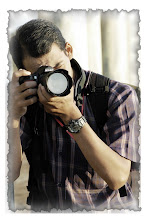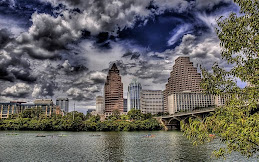Nikon D700 Review
Review based on a production Nikon D700The introduction of Nikon's new D700 may have been one of the worst kept secrets in an industry with more leaks than the Titanic, but it was still something of a surprise coming so hot on the heels of the D3 and D300. Essentially a D3 shrunk down and squeezed into a body roughly the same size as a D300, the D700 is Nikon's first 'compact' professional SLR, and in its segment of the market will compete with the recently announced Canon EOS 5D Mark II and Sony DSLR-A900.
The imaging side of the D700 is pretty much the same as the D3; it shares the acclaimed 12.1MP full frame ('FX') sensor and has the same processing engine, so we would presume output to be almost identical. The main differences (aside from being considerably smaller) are physical; there's a different shutter (good for 150,000 exposures rather than 300,000 on the D3), different viewfinder prism (with 95% coverage) and a slower burst rate. You also lose the rear LCD info panel (there's no room for it) and one of the D3's two CF card slots, but you do get a couple of extra features to soften the blow slightly; most notably a self-cleaning sensor and a built-in flash. We'll look a little more in-depth at the differences between the D3 and D700 in a moment.
The D700 joins the D3 as a fully-fledged 'professional' model; it has the same tank-like build quality (though we're sure the pop-up flash will cause a few raised eyebrows), and gets you the full pro service from Nikon. And the pricing (around $2999) reflects this; anyone hoping for an 'affordable' semi-pro full frame Nikon SLR will have to wait until the cost of producing such large sensors falls considerably.
Nikon D700 Key Features
- 12.1 megapixel full-frame sensor (8.45µm pixel pitch)
- Image Sensor Cleaning (vibration) *
- ISO 200 - 6400 (with boost up to ISO 25600 and down to ISO 100)
- Also supports DX lenses, viewfinder automatically masks (5.1 megapixels with DX lens)
- 14-bit A/D conversion, 12 channel readout
- Same ultra-fast startup and shutter lag as D3
- Nikon EXPEED image processor (Capture NX processing and NR algorithms, lower power)
- New Kevlar / carbon fibre composite shutter with 150,000 exposure durability *
- Multi-CAM3500FX Auto Focus sensor (51-point, 15 cross-type, more vertical coverage)
- Auto-focus tracking by color (using information from 1005-pixel AE sensor)
- 95% coverage, 0.72x magnification viewfinder *
- Auto-focus calibration (fine-tuning), fixed body or up to 20 separate lens settings
- Scene Recognition System (uses AE sensor, AF sensor)
- Picture Control image parameter presets
- 5 frames per second continuous with auto-focus tracking*
- Optional MB-D10 Battery Pack (same as D300), increases burst rate to 8 fps *
- UDMA compatible single CF card slot *
- 3.0" 922,000 pixel LCD monitor
- Live View with either phase detect (mirror up/down) or contrast detect Auto Focus
- Virtual horizon indicates if camera is level (like an aircraft cockpit display)
- HDMI HD video output
- 'Active D-Lighting' (adjusts metering as well as applying D-Lighting curve)
- Detailed 'Control Panel' type display on LCD monitor, changes color in darkness
- Magnesium alloy body with connections and buttons sealed against moisture
- Improved Info display on main screen *
* Different to D3
Nikon D700 vs D3: Key Differences
Although the D3 and D700 are essentially the same camera in a different form factor (the D700 being far closer to the D300 in design and control layout), there are a few important specification differences.
* D700 is approx 34mm (1.3 in) shorter, 13mm (0.5 in) narrower and 10mm (0.4 in) shallower.
- Smaller, lighter body *
- Built-in iTTL flash (G.No 17 / ISO 200)
- No rear information panel (new info display on main LCD)
- D700 doesn't have the D3's 5:4 aspect ratio option
- 95% coverage, 0.72x viewfinder (D3: 100% / 0.7x)
- Focus screen DX mode now indicated with a rectangle rather than shaded area
- Lower burst rate (5.0 fps / 8.0 fps with optional MB-D10)
- 100 frames maximum in continuous shooting mode
- Smaller battery (EN-EL3e)
- Optional battery grip (MB-D10, same as D300)
- Expanded Function button options (can assign any camera menu item)
- Live View can be assigned to FUNC, AE-L or Preview buttons (allowing LV + different drive modes)
- Virtual Horizon can be overlaid on Live View preview image
- Different shutter (150,000 cycle rating - same as D300)
- Image Sensor cleaning ('sensor shake' dust reduction)
- Single CF slot (D3 has two)
- Minor menu and control differences (control layout is almost identical to D300)
Weight (no battery) : D3 - 1240g, D700 - 995g
Friday, October 10, 2008
Nikon D700 Review
Subscribe to:
Post Comments (Atom)










No comments:
Post a Comment